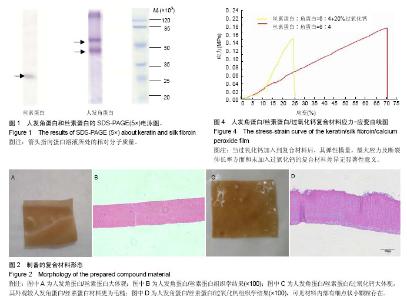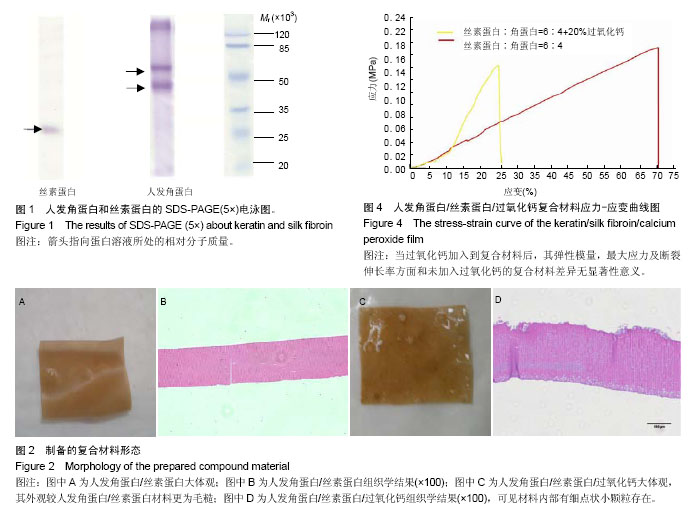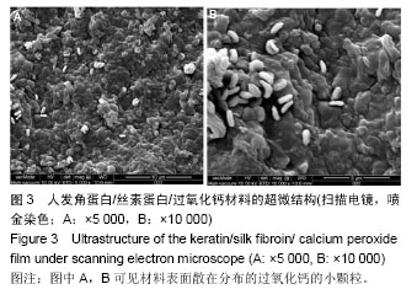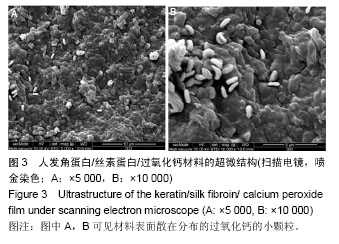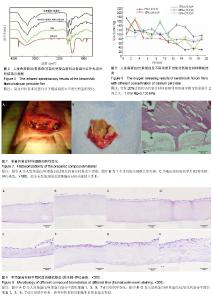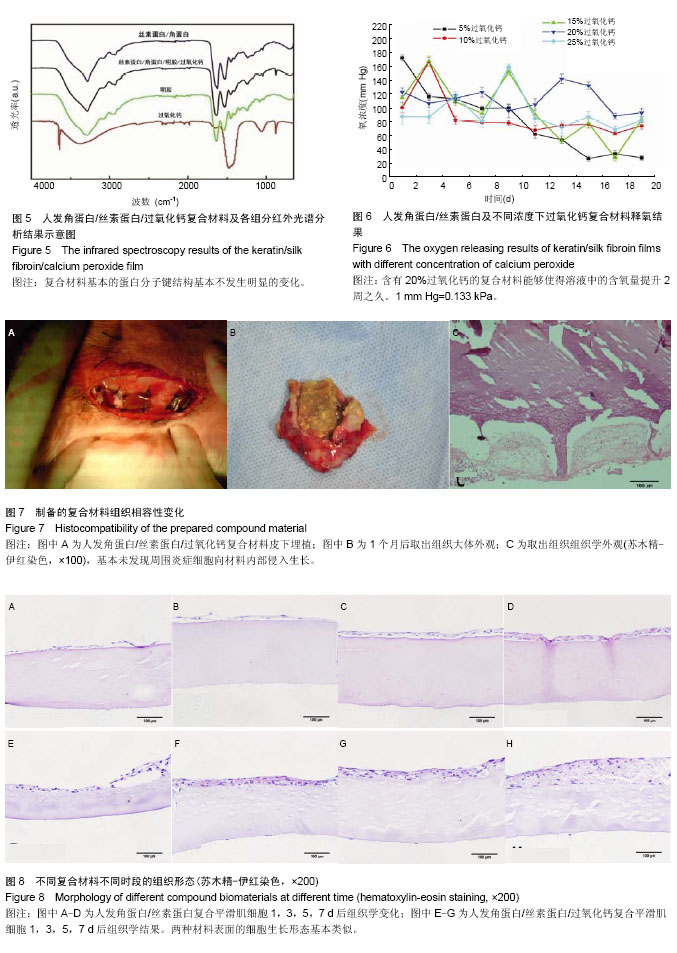| [1] Atala A. Tissue engineering for the replacement of organ function in the genitourinary system. Am J Transplant. 2004;4 Suppl 6:58-73.
[2] Langer R, Tirrell DA. Designing materials for biology and medicine. Nature. 2004;428(6982):487-492.
[3] Mangera A, Chapple CR. Tissue engineering in urethral reconstruction-an update. Asian J Androl. 2013;15(1):89-92.
[4] Tanabe T, Okitsu N, Tachibana A, et al. Preparation and characterization of keratin-chitosan composite film. Biomaterials. 2002;23(3):817-825.
[5] Sahoo S, Toh SL, Goh JC. PLGA nanofiber-coated silk micro-fibrous scaffold for connective tissue engineering. J Biomed Mater Res B Appl Biomater. 2010;95(1):19-28.
[6] Nakamura A, Arimoto M, Takeuchi K, et al. A rapid extraction procedure of human hair proteins and identification of phosphorylated species. Biol Pharm Bull. 2002;25(5): 569-572.
[7] Katoh K, Shibayama M, Tanabe T, et al. Preparation and physicochemical properties of compression-molded keratin films. Biomaterials. 2004;25(12):2265-2272.
[8] Yamauchi K, Hojo H, Yamamoto Y, et al. Enhanced cell adhesion on RGDS-carrying keratin film. Mat Sci Eng C-Bio S. 2003;23:467-472.
[9] Vasconcelos A, Freddi G, Cavaco-Paulo A. Biodegradable materials based on silk fibroin and keratin. Biomacromolecules. 2008;9(4):1299-1305.
[10] Verma V, Verma P, Ray P, et al. Preparation of scaffolds from human hair proteins for tissue-engineering applications. Biomed Mater. 2008;3(2):25007.
[11] Xie M, Xu Y, Song L, et al. Tissue-engineered buccal mucosa using silk fibroin matrices for urethral reconstruction in a canine model. J Surg Res. 2014;188(1):1-7.
[12] Yamada H, Nakao H, Takasu Y, et al. Preparation of undegraded native molecular ?broin solution from silkworm cocoons. Mater Sci Eng C. 2001;14(1-2):41-46.
[13] Aluigi A, Varesano A, Montarsolo A, et al. Electrospinning of keratin/poly(ethylene oxide) blend nanofibers. J Appl Polym Sci. 2007;104(2):863-870.
[14] Tonin C, Aluigi A, Vineis C, et al. Thermal and structural characterization of poly(ethylene-oxide)/keratin blend films. J Therm Anal Calorim. 2007;89(2):601-608.
[15] Folkman J, Hochberg M. Self-regulation of growth in three dimensions. J Exp Med. 1973;138(4):745-753.
[16] Ge Z, Yang Q, Xiang X, et al. Assessment of silk fibroin for the repair of buccal mucosa in a rat model. Int J Oral Maxillofac Surg. 2012;41(5):673-680.
[17] Harrison BS, Atala A. Carbon nanotube applications for tissue engineering. Biomaterials. 2007;28(2):344-353.
[18] Baker AM, Hatton W. Calcium peroxide as a seed coating material for padi rice requirement for and provision of oxygen. Plant Soil. 1987;99(2-3):357-363.
[19] Selim M, Bullock AJ, Blackwood KA, et al. Developing biodegradable scaffolds for tissue engineering of the urethra. BJU Int. 2011;107(2):296-302.
[20] Fujii T, Tanaka T, Ohkawa K. Biomineralization of calcium phosphate on human hair protein film and formation of a novel hydroxyapatite-protein composite material. J Biomed Mater Res B Appl Biomater. 2009;91(2):528-536.
[21] Harrison BS, Eberli D, Lee SJ, et al. Oxygen generating biomaterials for tissue regeneration. Biomaterials. 2007; 28(31):4628-4634.
[22] Radisic M, Park H, Chen F, et al. Biomimetic approach to cardiac tissue engineering: oxygen carriers and channeled scaffolds. Tissue Eng. 2006;12(8):2077-2091.
[23] Nomi M, Atala A, Coppi PD, et al. Principals of neovasculariza-tion for tissue engineering. Mol aspects Med. 2002;23(6):463-483
[24] Hanh DN, Rajbhandari BK, Annachhatre AP. Bioremediation of sediments from intensive aquaculture shrimp farms by using calcium peroxide as slow oxygen release agent. Environ Technol. 2005;26(5):581-589.
[25] Huang Y, Onyeri S, Siewe M, et al. In vitro characterization of chitosan-gelatin scaffolds for tissue engineering. Biomaterials. 2005;26(36):7616-7627.
[26] Kimura Y, Ozeki M, Inamoto T, et al. Adipose tissue engineering based on human preadipocytes combined with gelatin microspheres containing basic fibroblast growth factor. Biomaterials. 2003;24(14):2513-2521.
[27] Pilatz A, Schultheiss D, Gabouev AI, et al. Isolation of primary endothelial and stromal cell cultures of the corpus cavernosum penis for basic research and tissue engineering. Eur Urol. 2005;47(5):710-718.
[28] Liu J, Lawrence BD, Liu A, et ak. Silk fibroin as a biomaterial substrate for corneal epithelial cell sheet generation. Invest Ophthalmol Vis Sci. 2012;53(7):4130-4138.
[29] Oh SH, Ward CL, Atala A, et al. Oxygen generating scaffolds for enhancing engineered tissue survival. Biomaterials. 2009; 30(5):757-762.
[30] Xie M, Song L, Wang J, et al. Evaluation of stretched electrospun silk fibroin matrices seeded with urothelial cells for urethra reconstruction. J Surg Res. 2013;184(2):774-781. |
